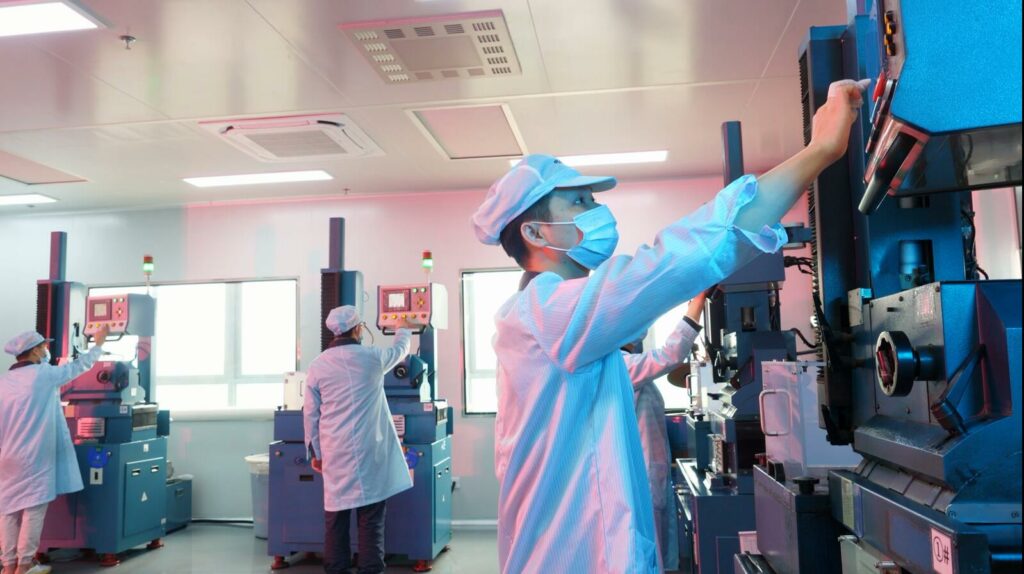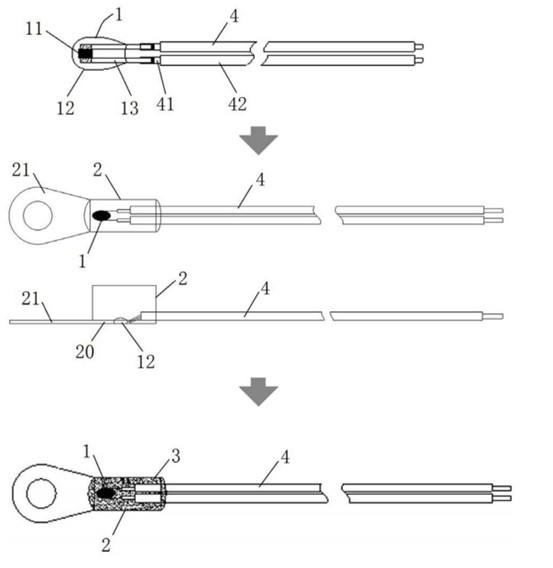
NTC temperature sensor, known as negative temperature coefficient temperature sensor, is widely used in temperature measurement, control, compensation, etc., especially in air conditioners, refrigerators, ovens and other household appliances, and has become an important core electronic component for temperature measurement.
Many high-temperature resistant NTC temperature sensors are built with a glass-encapsulated thermistor coated by epoxy and potted into a metal housing.
The biggest problem is that when measuring the temperature, the heat needs to be transferred through the metal housing, epoxy resin, the glass bead in the glass-sealed thermistor, and then be transferred to the thermistor’s chip (NTC chip) gradually. The longer the distance, the bigger the temperature measurement accuracy error is. Moreover, the epoxy is easy to be carbonized in a high temperature environment above 125℃, which will affect the temperature measurement and lead to detecting failure . Although the glass-sealed thermistor can work normally in a high temperature environment of 200℃ to 300℃ for a long time, it has its limits in epoxy. This kind of temperature sensor cannot work in a high temperature environment above 125℃ for a long time, and the thermal conductivity of resin is poor. More seriously, the reaction time of the temperature sensor will be slow, which is difficult to satisfy the high-efficiency requirements of household appliances.
EXSENSE investigates a high-sensitivity and high-temperature-resistant NTC temperature sensor, which is with high sensitivity, fast response, high precision, and great performance in high temperature environment for a long time.
The high-sensitivity and high-temperature-resistant NTC temperature sensor uses stainless steel sealing glass powder as the medium, directly joins the glass bead of the glass encapsulated thermistor to the stainless steel housing by sintering, and fills the inner cavity of the stainless steel housing with silicone potting glue.
During the temperature measurement process, the heat can directly reach the glass- encapsulated thermistor glass bead through the stainless steel housing, and then transmit to the NTC chip inside the glass bead. Compared with the old designed temperature sensor, the temperature sensing distance is shortened, the temperature measurement precision is improved. Moreover, silicone potting compound is more resistant to high temperature than epoxy, and has a wide temperature range (generally in the range of -50 to 200℃), and it does not release heat during curing, and the stress effect on the glass-encapsulated thermistor is very small, it will not break the glass bead. In addition, the thermal conductivity of silicone potting compound is better than that of epoxy, and it has good flexibility, high hardness and good repairability.
This kind of NTC temperature sensor is with a sensitive response, a greatly accelerated temperature sensing speed, and high precision, and can also work normally in a high temperature environment for a long time.
How to make:

